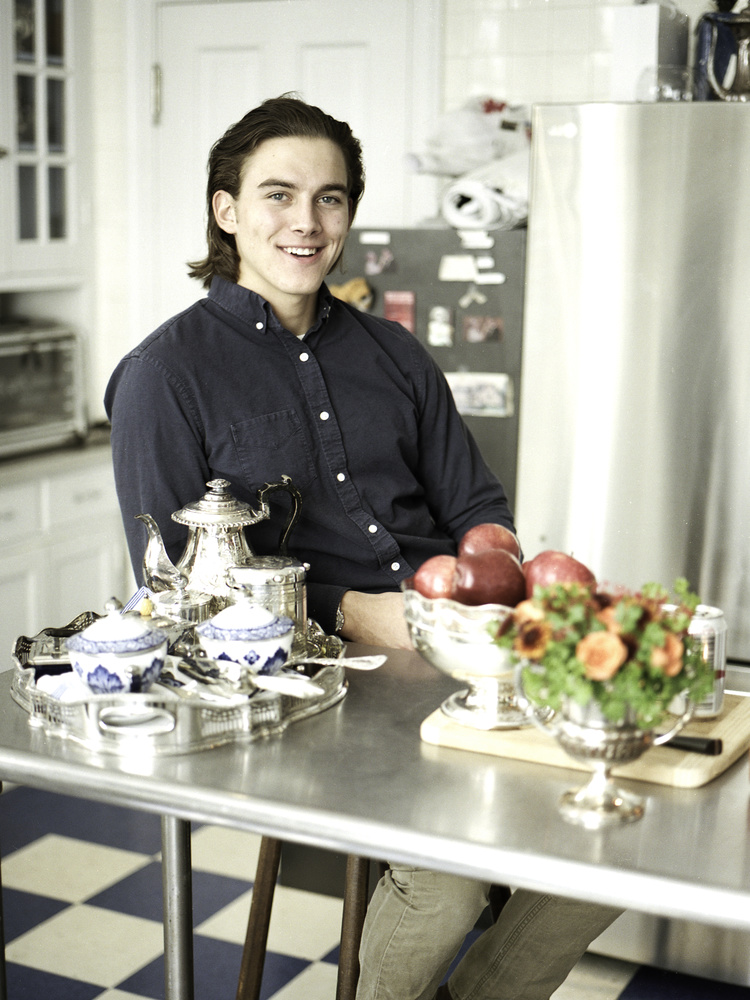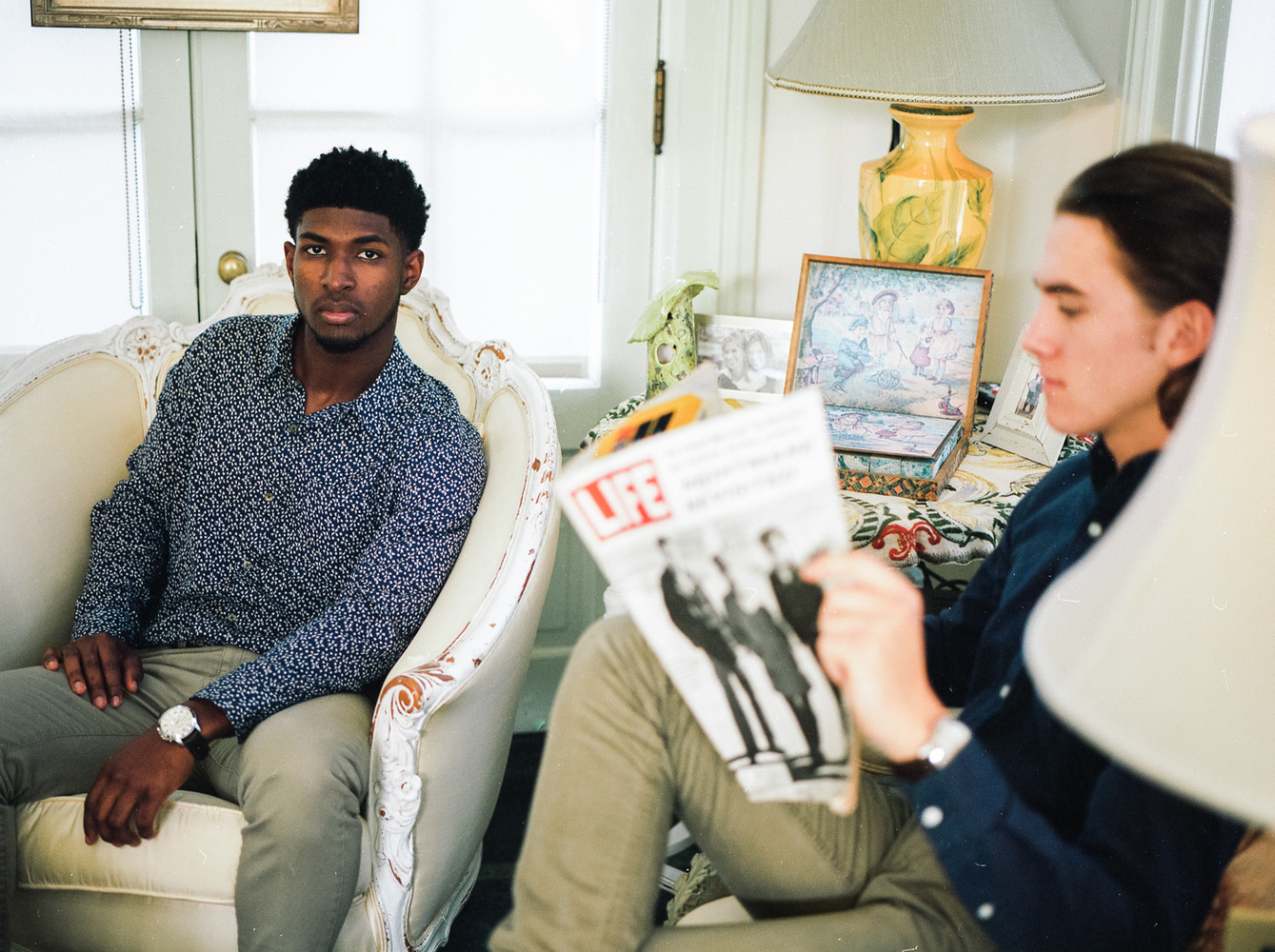This is more or less the camera that started film photography for me. Since developing an appreciation for Joey L’s work, I wanted to shoot medium format. The focus falloff and rendering was just so surreal compared to full-frame and crop-sensor cameras that I had been shooting with. Unfortunately, the cost of entry was a little steep for a digital back. After doing some research I stumbled upon film 645 cameras. And so it began.
Now that was a few years ago. As someone that wasn’t getting paid to shoot at the time, even the 645AF, the cheapest of the lot, was out of my price range. I ended up buying a beat up Mamiya 645 Super instead. Coupled with a decently clean 80mm lens, I started shooting like a madman. I learned that film was a little more difficult to work with that I had originally imagined and the camera got shelved for a while. The next few times I picked it up, the motor drive withered away and I unfortunately had no other way to advance the film. I searched the Internet for a manual winder or another motor drive and was unable to turn one up, I gave up on it once again.
Finally, I started using digital backs for select projects here and there. I was shooting on the current (at the time) 645DF+ and was in love with medium format again. But not every job required it and I wasn’t about to buy one for personal work. And again, I found myself shopping for another film camera. I decided that for digital back integration and overall ease of use, I was going to ante up and buy an AF model 645.
It’s actually not a hard decision even though there are four to choose from. After doing a bit of research, I found that the biggest difference between the 645AF, 645AFD, 645AFD II, and 645AFD III is digital back compatibility. The newer the camera, the newer the back you can use on it. Considering the backs that I had been using would fit an AFD, I saved a few hundred dollars and went with it. The slightly improved autofocus of the newer models wasn’t a huge factor for me considering it’s mostly a portrait camera.
After shooting with it for a few months I have few bad things to say, and those are nitpicks. The camera itself is built pretty well, it’s plastic on the outside but it doesn’t have much flex to it so it feels solid in your hands. Compared to any full-frame DSLR, the viewfinder is massive, and that helps tremendously for manual focus and composition considering I wear glasses. The button layout is fairly simple and nearly identical to the digital 645DF and DF+ bodies. Aperture and shutter speed get their own dials, and ISO is set on the back with an annoyingly unresponsive set of up and down arrows. The mode dial and the meter are about the same as any digital camera as well. Overall, operation is easy if you’ve used any digital camera with interchangeable lenses.
Let’s talk about image quality. While this is mostly up to the film that you put through it, the lenses play a part in your final result. With film cameras, the lenses really do make or break a system as there are often few and in the world of medium format, no third-party brands make lenses. I have had no problem with any of Mamiya’s lenses. The standard 80mm (50mm in full frame terms) is tack sharp from f/2.8 as is the 45mm (28mm), and these are my main lenses. Lenses up to 300mm are available for sports (good luck with the autofocus) and portrait work. For those looking for the maximum resolution, slow speed black and white and just about any slide film will look amazing through this camera once properly scanned.
Autofocus is definitely a touchy subject for this camera. You have two modes: continuous and single, and they both run off of a single autofocus point in the center of the frame. The continuous mode is downright awful and unusable, but single is snappy given enough light. In darker situations, you’ll want to manual focus. Only having a center point means a lot of focusing and recomposing. It doesn’t bother me, but I know many people have issues with it.
I will address the elephant in the room: negative size. For digital shooters, the rendering of 645 film is pretty wild. I know it was for me initially. For more serious film shooters, however, it’s often seen as the professionals' 35mm in that the negatives are tiny in comparison to 6x7, 6x9, and large format systems. I totally get it, it is the most economical though with 16 frames a roll versus 8 a roll (ridiculous right?) from my Fuji GSW690 that spits out monstrous 6x9 negatives. Why then would I not stick to 6x7 and larger for a relatively similarly priced camera? Well it doesn’t make a ton of sense but the somewhat smaller camera (compared to the RZ67 I used to own or the Pentax 67), more shots per roll, and a similar look to medium-format digital come together to give me reason enough to shoot this at every shoot alongside my X-Pro2.
The Mamiya 645AFD and its siblings are workhorses of cameras. You can’t really go wrong with buying one. The lenses are readily available online, they’re still repairable by a number of facilities around the U.S.A. (and most likely the rest of the world but I’ve never had to look), and the images are downright gorgeous. If you’re thinking about getting one, I would suggest it over any other 645 camera for its versatility and price. It certainly isn’t perfect, but it gets the job done and doesn’t cause me any hassle and that’s a good camera in my book.














I'm happy you found a camera that works for you, but I don't understand this statement:
"the focus falloff and rendering was just so surreal compared to full-frame and crop-sensor cameras"
Those are some solid shots, but honestly could see them being done with a full-frame camera. What unique magic happens on medium format other than bragging rights at this point?
I'll have to agree here...as a long timePhaseOne system user (now sold off in fav of APSc and M43).
These aren't very good representative examples, not because they aren't good images but at typical WEB sizes it really doesn't matter tremendously. The real benefit is a broader tonal & dynamic range, benefitting large scale printing work.
Also being able to DEPLOY this system can be difficult. With so much resolution critical focus and stabilisation are key.....
I would have liked to see landscape images with a broad dynamic range...to evaluate how well this camera system captures that. Portraits are easy...and the thin DOF is not always desirable when you need to get more in focus.
I used to own this exact camera and I miss it every day. I hope to pick one up again someday. Great shots!
Film cameras are fun, but there is no technical advantage of using medium format film over digital full frame cameras.
I just got the Rz67 pro 2 and from the first roll I got back I could tell the difference in fall off and tonal smoothness (for lack of a better description) I especially notice it on the background even on a jpeg scan (there may be more at play there.) The first pic is the RZ67 with 110 mm and Porta 160 only processing was a bit of liquify but nothing else that I remember and the second is 5dsr with 24-70L2 shot raw and processed fully.
I had one, but it was waaaay tempermental and I had to return it. When it worked it was a lot of fun, though! Now I break out the RB67 when I want to shoot MF. Honestly, though, I've been looking at the Pentax 67 as the RB is stupidly awkward to handhold.
If you are getting a Pentax 67 get the most recent one(s) you can afford. Older models are prone to winding gear failure and the mirror coming un glued. It also has quite a kick to it at certain shutter speeds.
Yeah, I've heard. I'm not too stoked about the slow sync, either. But my options in 6x7 are limited. Might just move up to the RZ. For the 4th time. Man, I love that camera.
The Pentax 645 is a great camera as well, very easy to hold/shoot with. I traded my RB years ago for the 645.
funny, I always wanted a Pentax 67 and when I got one 5 months ago I was kind of disapointed with it...sold to go back to a RB67 with prism and a 150mm
1/30th sync , large mirror moving like crazy...not
I hope you'll enjoy this system :)
I'll only break out my RB67 if I want to fight with a bear. On a serious note, that thing is a BEAST. So sad I'm not able to use it as much now due to the nature of my work...
I owned and used a Pentax 6 x 7 and a Bronica 645. The Pentax got me the nickname "shaky" with the mirror bounce at sync speed. Film is great if you can get a good scan at a fair price. Digital is just more practical then film most of the time. The new Fuji GFX looks very interesting, 50MP body EVF and normal lens for $ 8,000. Is the "full frame" or MF really better quality than "crop" frame or is it the bigger view finder and build quality and higher price makes a photographer think the quality is better? Shooting with an EVF camera Sony A77 II I am getting better results than I ever did with film. Any size film.
William Mitchell (or anyone) - I rented the Fuji GFX 50S medium format to shoot in Zion, and fell in love with it. It's way out of my price range, though. I'm going to the Amalfi Coast in May, and it would cost nearly $1,000 to rent for 11 days, even online. So I'm thinking about buying a used Mamiya 645 with a digital back. I realize it won't be as good as the Fuji, but man, the price difference, and to actually own it could be amazing. How would the Mamiya 645 image quality compare to the Fuji? Should I buy it?
This is a great article. I think it's important to mention the actual 645 frame size. It's boxier and I love it. The Epson v800 does great with 645 negs.
Spencer, do you shoot with a digital back on this or film?
All film in this article, my experience with digital backs has been on the newer bodies like the 645DF and 645DF+ that are incompatible with film backs.
The Mamiya 645 cameras are light, fast handling, inexpensive with inexpensive lenses. They have interchangeable backs, like Hasselblads. I have, however, settled on a Rolleiflex Xenotar for MF portrait work. For some reason, Rollies have come way down in price lately.